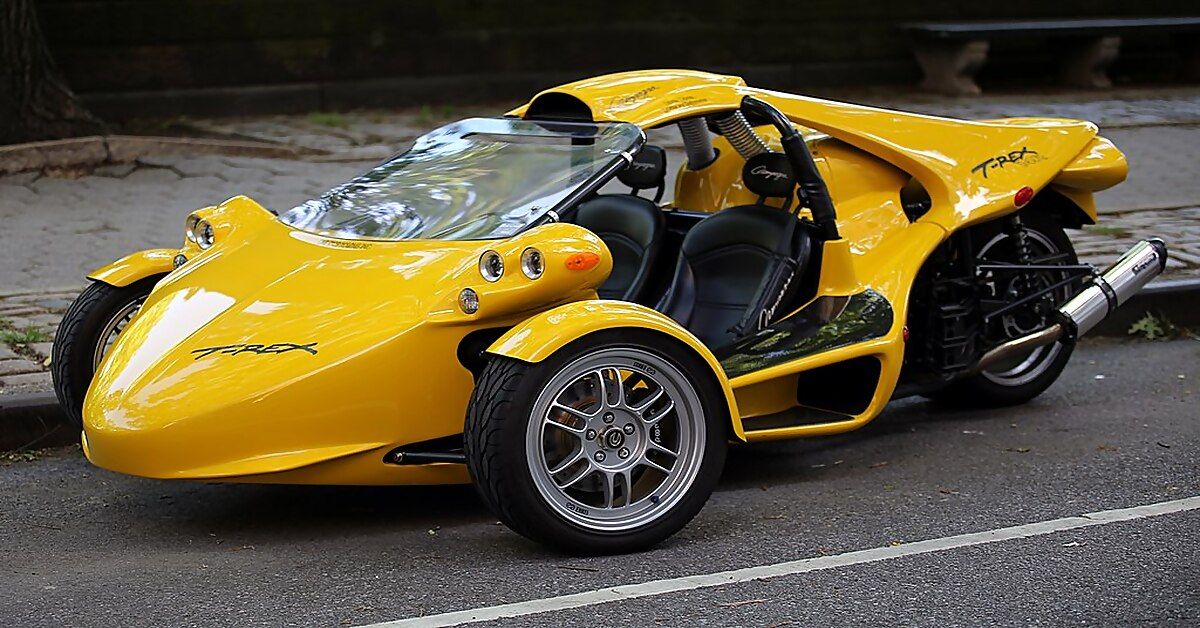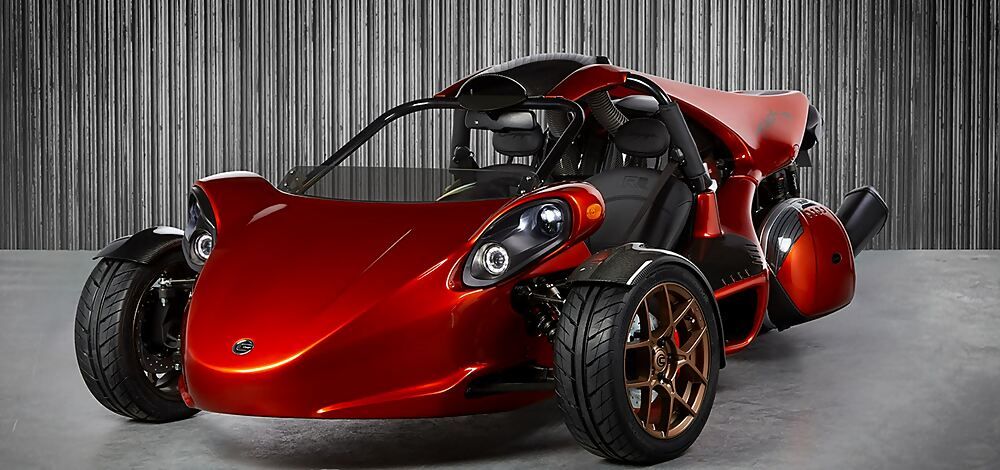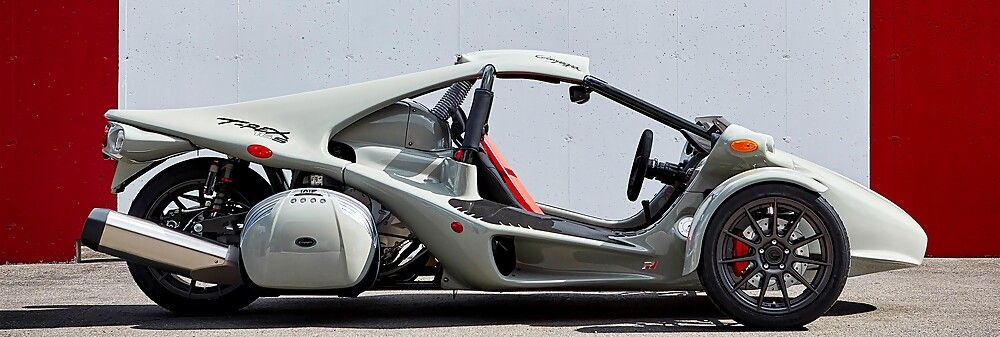Campagna Motors is a relatively new company when compared with the much longer-standing companies such as the iconic 188-year-old Ford and 77-year-old Chevrolet. Founded in 1988 in Canada, the Campagna Motors company has already developed a reputation for success and innovation with their wildly popular T-REX three-wheel sports car.
Their first majorly successful and most well-known prototype, the T-REX, was developed in 1994 and hit the market with a bang. Creativity and innovation came together in the family-owned corporation to allow their vision of the three-wheel car to become incredibly successful from launch. The brand's vehicles remain successful even to this day.
By challenging the modern definition of a “car” with its three-wheel design and coupling it with an exciting interior and innovative features, Campagna created an incredibly successful vehicle. Bucking trends for the niche market, the T-REX is both fun and functional.
Let’s take a closer look at what makes the Campagna T-REX a really cool three-wheel car!
A Brief History Of Campagna
Campagna Motors was founded by Daniel Campagna in Quebec, Canada. They are a family-owned company and have employed a very creative team of engineers and creators since their inception. Daniel Campagna created the original T-Rex design in 1988, but the final project wasn’t showcased until 1994 at the Montreal Auto Show at the city's Olympic Stadium.
After its premiere, the T-REX was only offered in Quebec until 2000. The company eventually relocated to Boucherville in order to get closer to Montreal and picked up the pace of their production. They reached out to new markets and obtained a worldwide manufacturing license that allowed them to market the T-REX everywhere, including the United States.
After a bankruptcy disrupted operations in 2008, the original “Campagna Moto Sport/Campagna Motors” company was revamped and purchased by Andre Moriseette and David Neault. It entered into a deal with “T-REX Vehicles Inc.,” which granted the subsidiary full rights to produce the T-REX. This cut costs and expanded and rejuvenated the brand.
In another great move, the company entered into an alliance with the BMW Group in 2013. The agreement allowed Campagna to use the BMW 1649cc 6-cylinder engine in the T-REX, which meant they had access to an engine capable of the power they really sought while also benefiting from the reliability of an existing and well-known brand.
Another rough patch caused Campagna Motors to close its doors in 2019 for part of the year. In April 2019, though, it reopened with new investors and continued operations and production. As a long-standing darling of Canada, it came as no surprise when the company was able to secure funding to once again continue operations.
An Inside Look At The Campagna T-REX
The original T-REX design created by Daniel Campagna was called the “Concept 3.” Since that original work, the car has undergone several changes to the drivetrain, overall appearance, and engine.
Although it began with engines scavenged from Suzuki GSX-R1100 bikes, it has come a long way since then. The company used to obtain whole bikes just to remove the powerplant, which proved to be far from cost and time-efficient.
The company changed to using Kawasaki ZX-11 engines which allowed for ram-air intake located above the seating area. When Kawasaki upgraded, so did Campagna, following along as the company went to Kawasaki ZX-12 engines, then eventually the Kawasaki ZX-14. They continued to use Kawasaki engines up until they entered their partnership with the BMW Group in 2013.
At that point, the company began utilizing BMW’s engine in their newest iteration: The T-REX 16S. This upgrade included an inline-six paired with a six-speed sequential-shift gearbox. According to Campagna, the 16S now boasts 160 brake-horsepower and can hit 60 MPH in just under four seconds.
That is amazing acceleration on an already lightweight car. The T-REX comes in at just 1,157 lbs. The open cockpit of the three-wheeler also allows the driver to fully experience all of that speed with very little to reduce it. Although it may initially seem scary, Campagna actually has several built-in features to ensure all precautions are taken to guarantee safety.
The car has a 16-inch front and 18-inch back tires; specifically, it has BF Goodrich G-Force Sport COMP-2 tires, which are coupled with slotted and cross-drilled brake discs and front Wilwood calipers to give the best stopping and grounding power possible to the car, despite its high-speed ability.
Additionally, it boasts an adjustable coil-over-suspension system that, working in tandem with the low stance and weight distribution of the car, make the T-REX nearly impossible to roll.
The 16S has undergone several safety and crash tests, resulting in the addition of a steel frame that can withstand high-speed impact and roll-overs (just in case the prior features fail to keep it grounded). Although the car comes standard with three-point seatbelts, the chassis includes mounting points for four-point race-ready harnesses as well.
If there are any downfalls to the T-REX, they are that with the small stance and lightweight car comes a smaller cabin. It may be somewhat uncomfortable for taller drivers or riders. Additionally, though not necessarily a downfall, buyers should be aware that the T-REX does not come standard with power steering like most modern cars. Finally, the price tag on the T-REX 16S starts high at an MSRP of $57,999.
Overall, though, the beautiful appearance, incredible speed, and attention to safety overcome these smaller issues and make the T-REX a really cool three-wheel car.



